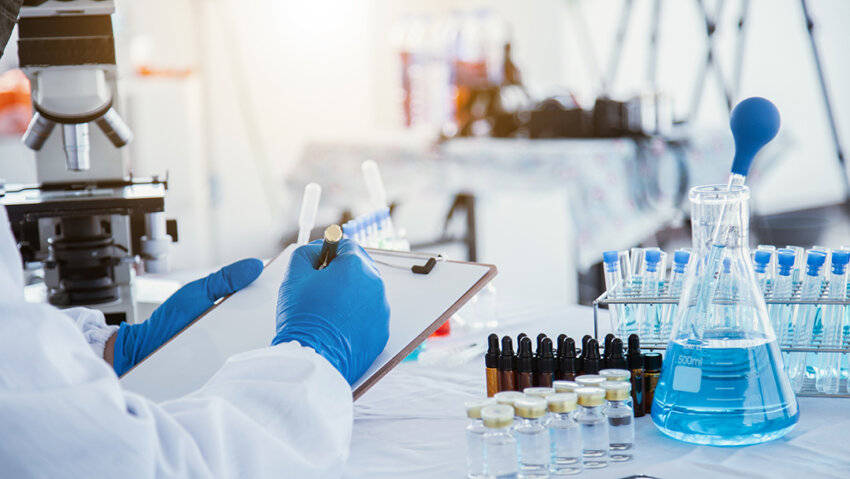According to the National Cancer Institute, more than 3 million men are living with prostate cancer in the United States. Of those, survivorship after five years is 97 percent.
With patients living longer and physicians seeing younger patients with this type of cancer, learning the best ways to treat patients and providing a better quality of life is the focus of a national clinical trial with participants from Mays Cancer Center, home to UT Health San Antonio MD Anderson Cancer Center.
“There’s some aspect of prostate cancer where it really is a very long-term problem, and doing something today just puts a patient at risk of side effects,” said Christien Kluwe, MD, a Mays Cancer Center radiation oncologist.
Kluwe said the other end of the spectrum is patients with a more aggressive cancer requiring a variety of treatments to combat the tumor to increase survivability.
“That’s one of the big challenges. How do we figure out who the guys are who have a low-risk tumor and don’t really need treatment versus the guys who have a high-risk tumor and need the kitchen sink thrown at it?” he said.
Clinical trial explained
Researchers hope the phase 3 NRG-GU010 randomized clinical trial will answer the question of how much treatment a patient with unfavorable, intermediate-risk prostate cancer needs. As part of the trial, a biopsy from the participant’s tumor is tested for a variety of genes that can predict the risk of cancer spreading.
Patients are given a score from 0–1 based on the results. A low-risk score is less than .45, an intermediate-risk score is .45–.60, and a high-risk score is more than .60.
Kluwe said the standard of care for a patient with unfavorable intermediate risk is radiation therapy and hormonal therapy based on the results of a physical exam, biopsy and blood tests. This hormone therapy, called androgen deprivation therapy, lowers the level of testosterone and dihydrotestosterone in the body. Kluwe likens it to women going through menopause.
“It affects the entire body. The patients may experience fatigue, weight gain, arthritis, aches and pains in odd places, mood changes and hot flashes,” Kluwe said. “But we also know that this hormonal therapy stresses the heart. When you take away somebody’s testosterone, they are actually at increased risk for adverse cardiac events including stroke and even heart attacks.”
Kluwe said that patients living longer means treatment must change to give patients a better quality of life as they age. He recalled a time in his youth when he met a retiring work colleague of his father’s.
“He was shuffling with a cane, showing signs of advanced age, and he was 65. Today, that’s what my typical 85-year-old looks like,” he said. “So, when I see a guy who is 70, I’m thinking I’ve got to kick the disease out because he’s going to live to 85. These men are healthier and are living longer, which means that the competing risk of death is no longer there.”
He said the same holds true for the increasing number of younger patients he is beginning to see.
“When I see a guy who’s 50, I tell myself, we really have to know the best thing for him,” he said. “I expect him to live another 35 years.”
Helping others
Milton Menjivar, a gregarious 78-year-old, said he’s never been sick a day except 20 years ago when he caught pneumonia.
Each year, during his birthday month, he schedules an annual exam with his physician, a holdover from his days in the military. In June 2023, the retired veteran and businessman was told his bloodwork was unusual and, after a meeting with a urologist, he learned he had prostate cancer.
Faced with his diagnosis, Menjivar extensively researched the disease and all treatment options. He learned his prostate was too enlarged for surgery, and he wanted to avoid radiation treatment.
“I found out that radiation treatment was like a flashlight, casting a wide beam that could damage healthy tissue around the tumor,” he said.
He consulted a nurse friend who arranged his meeting with Kluwe.
Throughout his life, Menjivar has been self-reliant, and despite a difficult upbringing and multiple injuries while serving in Vietnam, he maintains a positive attitude that he generously shares with the world.
“Overall, I’m a happy camper,” he said. “I’m the guy who talks to you at the grocery store.”
When Kluwe asked him if he wanted to join the trial, Menjivar said yes.
“I’m a giver,” he said.
As part of his treatment during the trial, Menjivar had radiation treatment. However, it was not the broad beam treatment he had previously heard about. Several pellets the size of a grain of rice were placed in his prostate near the tumor.
The pellets would help make his radiation treatment more precise so healthy tissue would not be impacted. The treatment is known as stereotactic body radiation therapy (SBRT). The advantage to SBRT is the treatments are completed in five sessions while other treatments can be daily for a month or longer.
Trial patients were put in two categories: those who received hormonal treatment and those who didn’t. Menjivar did not receive hormonal therapy.
Kluwe said patients like Menjivar are making a worldwide impact on treatments for prostate cancer.
“There is a kind of selflessness in participating,” Kluwe said. “He gave part of himself so other people can get the data and learn from his experience.”
After completing his radiation therapy with few side effects and no disruption in his life, Menjivar said he was in a good place.
“I feel great and still have a lot of life left in me,” he said.
For general inquiries about cancer clincical trials, please call 210-450-5798 or visit MaysCancerCenter.org/FindATrial.


